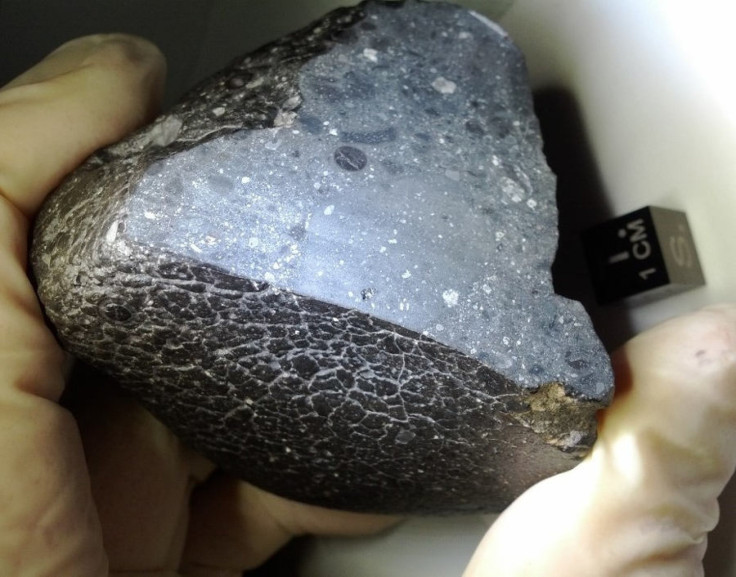NASA’s Curiosity Rover Confirms Martian Meteorites Found On Earth Originated From Red Planet

NASA’s Curiosity Rover has confirmed through new analysis that we indeed have visitors from Mars here on Earth -- at least in rock form.
According to a new study published by the American Geophysical Union, the Red Planet Rover used a new measurement of Mars’ atmosphere using its Sample Analysis at Mars to determine the origins of several meteorites discovered on Earth. Curiosity reached the new measurement by using SAM to analyze two forms of argon gas present on Mars -- argon 36 and argon 38.
Both of these isotopes of argon are found throughout the solar system. But Mars contains a greater amount of argon 38 -- the heavier isotope of argon -- in its atmosphere. This is due to the fact that the lighter form of argon can more easily rise to the top and escape Mars' atomosphere.
There was a time when the Martian argon ratio was found to be between 3.6 and 4.5 (3.6 to 4.5 atoms of argon 36 to every one argon 38). Measurements by NASA’s Viking landers in the '70s put the Martian atmospheric ratio in the range of four to seven. The new SAM direct measurement on Mars considers the correct argon ratio to be 4.2.
"We really nailed it," said lead study author Sushil Atreya of the University of Michigan, Ann Arbor. "This direct reading from Mars settles the case with all Martian meteorites."
The new data will also help scientist gain a clearer view of what Mars was like before its atmospheric loss and what caused it to transform from a water-rich, warmer planet to the cold, dry world we know today. Since argon is a "noble" or inert gas -- keeping it from reacting with other elements -- Atreya added that it was one of the best tracers to use in the quest to unravel the history of Mars’ atmosphere, reports Red Orbit.
“Other isotopes measured by SAM on Curiosity also support the loss of atmosphere, but none so directly as argon,” Atreya said. “Argon is the clearest signature of atmospheric loss because it’s chemically inert and does not interact or exchange with the Martian surface or the interior. This was a key measurement that we wanted to carry out on SAM.”
© Copyright IBTimes 2024. All rights reserved.






















